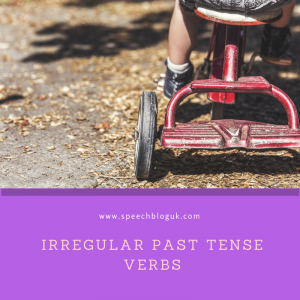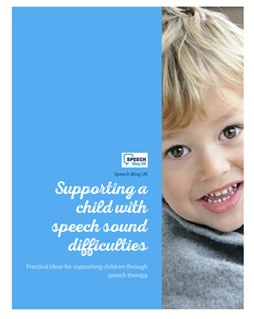Before Christmas, Helen wrote a post about teaching children to use the regular past tense. Once the child has mastered this, the next fun step is all the irregular verbs! As with nearly all grammatical rules in English there are always exceptions. We didn’t ‘blowed’ out the candles on the birthday cake yesterday we didn’t ‘sleeped’ and this morning I didn’t ‘drinked’ my coffee!

According to Steven Pinker, the famous Psychologist and Linguist, 70 % of the commonly used verbs are in fact irregular. This makes them an important area to teach for all children and especially those with a language delay or difficulty. So how are we going to teach them?
Step one.
The first job is to ensure that the child understands the past tense, and that it means something is finished. They also need some understanding of what a verb is and which bit it is in the sentence. Then we also want them to understand the regular -ed form. If you need more ideas for this section read this post.
Then we have to introduce the idea that sometimes the verb doesn’t take -ed!
Step two
I generally find that children just have to learn the irregular forms. Often, if you say the correct version they will have heard that word. They just need to learn it. Although there are different structures e.g. ew (blow – blew), no change (cut – cut), I normally teach them all together and instead target a selection of the most commonly used verbs.
Remember to try and keep practice fun. Play a game, but before each turn you have to pick a verb picture and try and put it in the past tense. Before you start the game, remind the child that these verbs are different and don’t take -ed. Remember to praise the child when they get it correct.
Select 10 or 15 verbs and teach these until the child can remember them and then move onto the next selection. Remember to go back and check all of the taught verbs every now and then.
A fun game to play uses everyday objects that you can link to irregular verbs. I used a bag and put a selection of objects in it. Then the child can pull out an object, think of the verb it links to and then put it into the past tense. I used objects such as a glove for wore, bubbles for blew, a fork for ate, a cup for drank etc.
Also think about helping the child to generalise these new words. You can quickly ask them what they were doing at break time – I threw the ball etc.
Errors
As with teaching the regular form, there are some common errors to look out for when teaching the irregular past tense.
- When children are first learning about the irregular form they often muddle the regular and irregular. For example they might say “I blewed the bubbles”. So they have correctly used the form blew but added an ed. Praise them for trying but remind them that these verbs don’t need the ed.
- Some children change the sentence rather than using the irregular (or regular) forms of the verb. For example they would say “I was eating my snack” or “I was jumping on the trampoline”. Although this is grammatically correct, we want them to understand how to change the verb to mark the tense.
- If the child is struggling to remember the different structures or confusing them, there are some great, specific resources for teaching the different forms. Look at these from Black Sheep Press – Irregular past tense ew and irregular past tense ought






Leave a Reply